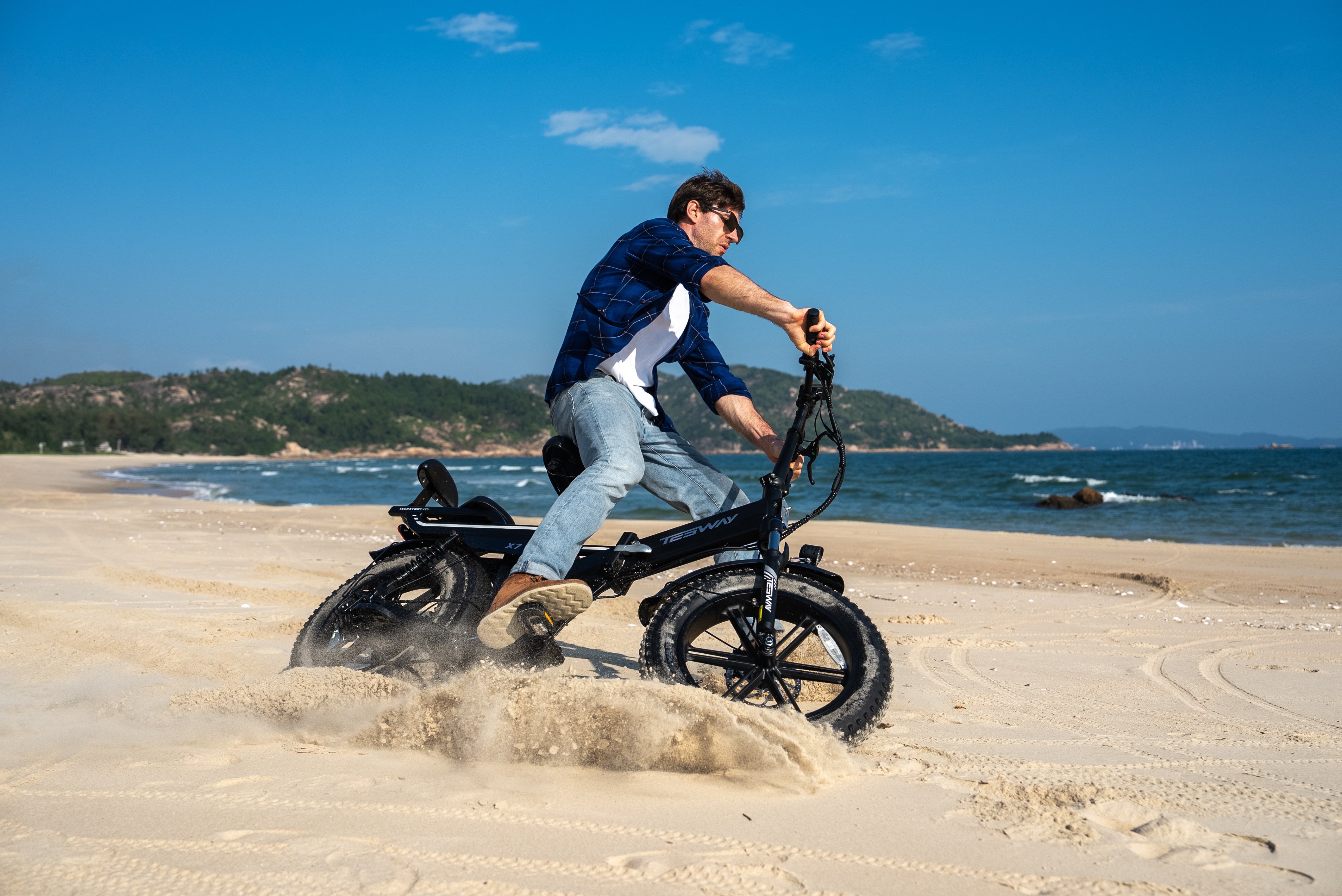Electric bikes represent a significant leap in the evolution of personal transport. Merging the green, health-conscious nature of pedal biking with the convenience and speed of motor-assisted travel, e-bikes are capturing the hearts of commuters, fitness enthusiasts, and leisure riders alike. But beyond their eco-friendly appeal, it's the potential for speed that often captures the public's imagination. How swiftly can these bikes go, and what does that mean for the future of urban mobility? Let's dive in and find out.
Electric Bike Speeds
At their core, electric bikes are bicycles equipped with a battery-powered motor that assists the rider's pedal power. Depending on the design, an e-bike's motor can kick in automatically or be activated through a throttle or pedal-assist modes. This motor assistance is what propels e-bikes to higher speeds than what would be achievable by pedal power alone.
Typically, an average electric bike offers speeds ranging from 15 to 28 mph (24 to 45 km/h), but these figures only scratch the surface. Electric bicycles like TESWAY can reach 28mph. The actual speed of an e-bike can vary dramatically based on factors such as motor wattage, battery capacity, bike weight, rider weight, terrain, and even wind resistance. High-performance models, particularly those designed for off-road or racing purposes, can exceed these averages, pushing the boundaries of what we expect from electric bicycles.

The Legal Speed Limits
It's crucial to understand that e-bike speeds aren't just a matter of mechanical capability—they're also a legal issue. Many countries and regions have enacted specific laws to regulate e-bike speeds, often categorizing them based on their maximum motor-assisted speed.
In the United States, for example, e-bikes are generally divided into three classes:
- Class 1: Pedal-assist only, with no throttle, and a maximum assisted speed of 20 mph.
- Class 2: Can be propelled solely by the motor, not just pedal assist, also capped at 20 mph.
- Class 3: Pedal-assist only, with no throttle, but a higher maximum speed of 28 mph.
These classifications are not just academic; they dictate where e-bikes can be ridden (e.g., bike paths, roads) and whether a helmet is required. By setting these limits, lawmakers aim to integrate e-bikes safely into the flow of traffic, balancing the benefits of faster travel with the need to protect all road users.
What is the Best Class 2 Electric Bike? >>>
Factors Affecting Electric Bike Speed
Let's delve deeper into what influences an e-bike's speed. Understanding these can empower riders to choose the right bike for their needs and maximize its potential:
- Motor Power: Measured in watts, a motor's power is a pivotal factor in determining an e-bike's speed. Higher-wattage motors can provide more assistance, pushing the bike to higher speeds.
- Battery Capacity: The more robust the battery, the longer it can sustain high-speed travel before needing a recharge. Battery capacity is a critical consideration for anyone looking to use their e-bike for extended rides or commutes.
- Rider Input: Even with motor assistance, the rider's effort plays a significant role. More vigorous pedaling can lead to higher speeds, especially on pedal-assist models.
- Terrain and Conditions: Steep hills, rough trails, and even headwinds can reduce an e-bike's speed. Conversely, smooth, flat surfaces and tailwinds can contribute to faster travel.
- Weight:The combined weight of the rider and the bike itself can influence speed. Heavier loads require more power to maintain the same speed as lighter ones.
By considering these factors, riders can not only select an e-bike that meets their speed expectations but also strategically use their bike's capabilities to achieve optimal performance.
How to Choose the Right Electric Bike for Speed
Selecting an e-bike that matches your speed requirements involves more than just checking the specs. Here are a few tips for choosing wisely:
- Understand Your Needs:Are you looking for fast urban commuting, leisurely rides, or off-road adventures? Your primary use case will guide your choice.
- Check the Specs:Pay close attention to the motor's wattage and the battery's ampere-hours (Ah). These figures can give you a ballpark estimate of the bike's power and range, which directly impact its speed and how long you can maintain that speed.
- Test Ride:Whenever possible, test ride multiple models. This hands-on experience will give you the best insight into how each bike performs in terms of acceleration, handling at higher speeds, and battery endurance under real-world conditions.
- Read Reviews and Seek Recommendations:Leverage the experiences of others. Cycling forums, e-bike reviews, and recommendations from seasoned riders can provide valuable insights into a bike's performance, including its speed capabilities and overall reliability.

Maximizing Your Electric Bike's Speed
Once you've selected your ideal electric bike, there are several ways to ensure you're getting the best possible performance from it:
- Regular Maintenance: Keeping your e-bike in top condition is essential for optimal speed. Regularly check the battery, tires, brakes, and motor to ensure everything is functioning efficiently.
- Optimize Your Riding Style: Learn to use the gear settings and pedal-assist levels effectively. Balancing your own pedal power with the motor's assistance can help you achieve higher speeds more efficiently.
- Understand Your Bike's Settings: Familiarize yourself with any programmable settings or modes your bike may have. Some e-bikes offer customization options that can affect speed, such as adjusting the level of pedal assistance.
Safety Considerations While Speeding
As you push the limits of your electric bike's speed, it's crucial to prioritize safety—for yourself and those around you:
- Wear a Helmet:Always wear a helmet, regardless of the speed. In the event of an accident, it can significantly reduce the risk of serious injury.
- Use Proper Lighting:If you're riding at high speeds, especially in low-light conditions, ensure your bike is equipped with bright front and rear lights for maximum visibility.
- Be Aware of Your Surroundings:High speeds can reduce your reaction time. Always be aware of your environment, including other vehicles, pedestrians, and potential hazards on your path.
Comparing Electric Bike Speeds with Traditional Bikes
While electric bikes offer the advantage of motor-assisted speeding, it's interesting to compare them with traditional bicycles. Without motor assistance, the average cyclist rides at a speed of 10-14 mph on flat terrain. E-bikes, with their ability to maintain speeds of up to 28 mph, provide a significant boost, especially for commuting or tackling challenging terrains. However, it's this blend of human and electric power that makes e-bikes a unique proposition, offering a faster, more efficient mode of transportation without sacrificing the physical and environmental benefits of traditional cycling.
Conclusion
Electric bikes are redefining the boundaries of cycling, offering riders an exhilarating blend of speed, efficiency, and fun. Whether you're commuting to work, exploring off-road trails, or simply enjoying a leisurely ride, understanding and maximizing your e-bike's speed can greatly enhance your cycling experience. By choosing the right bike, maintaining it properly, and riding responsibly, you can unlock the full potential of this innovative mode of transport. At TESWAY you can find an e-bike that meets your every need!
FAQs
What is the average speed of an electric bike?
The average speed of an electric bike ranges from 15 to 28 mph, depending on the model and conditions.
Are there legal speed limits for electric bikes?
Yes, many regions have specific legal speed limits for e-bikes, typically ranging from 20 to 28 mph, depending on the class of the bike.
Can I make my electric bike go faster?
While there are ways to maximize your e-bike's performance, it's important to adhere to legal speed limits and prioritize safety.
Recommended Similar Articles
Best Electric City Bike for Your Daily CommuteExploring the Cost: How Much Are Electric Bikes for Adults?
Who Makes the Best Electric Bike in the US Market Today
This is the Best electric bike for long distance touring
TESWAY X5 Vs. TESWAY S5 Which One Is Best For You?







Share:
Finding Your Best Cheap Folding Electric Bike on A Budget
Do You Need a License for an Electric Bike?